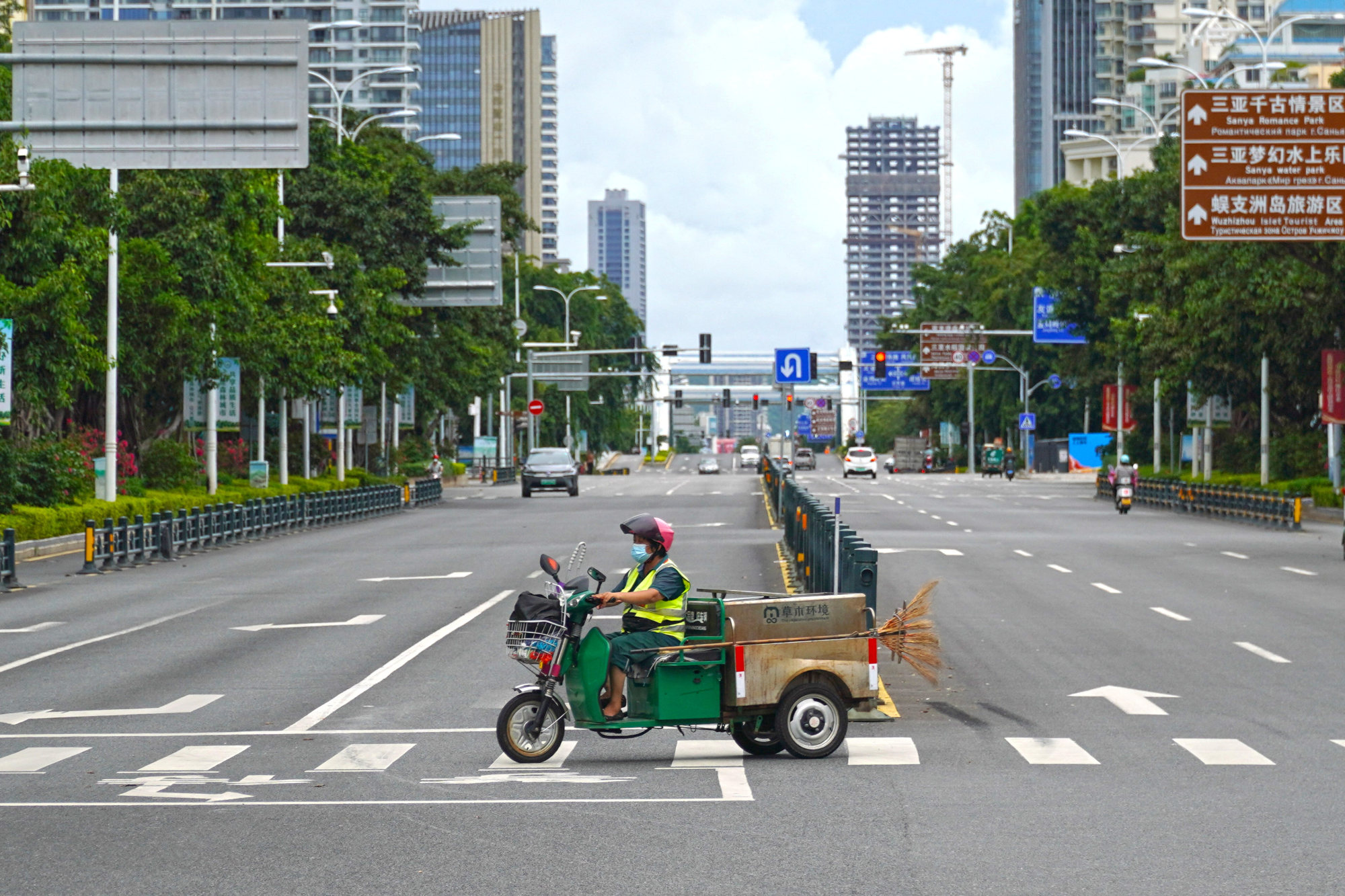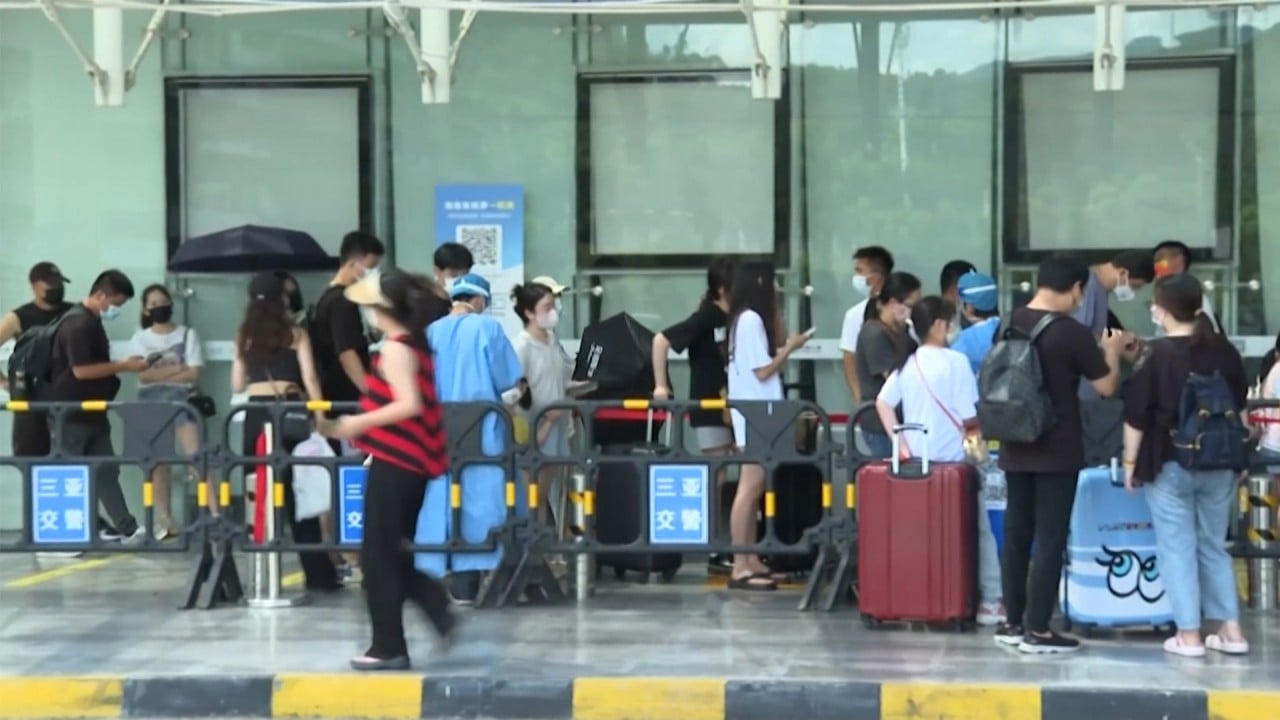
Snap Covid lockdowns turn summer holidays into nightmare for tens of thousands of Chinese tourists
- Visitors to some of the country’s most popular destinations have found themselves stranded at short notice – often because of a small handful of cases
- The authorities had eased travel restrictions this year in the hope of boosting the tourist sector after zero-Covid continued to take its toll on the economy
My family’s Hainan holiday nightmare shows misery of travel in zero-Covid China
As a result, tourists packed holiday hotspots, and streets and shops were once again bustling with visitors but then a series of outbreaks linked to the highly transmissible Omicron variant flared up across the country.
But unlike previous years, local authorities are now introducing snap lockdowns after recording just a handful of cases after similar measures were credited with stopping an outbreak in Shenzhen in March.
These lockdowns usually last for five to seven days, but can stretch into weeks or even months – leaving travellers unsure when or how they can get home.
Cissy Zhu, 32, a primary schoolteacher from Beijing, said she feared she would lose her job after becoming one of the tens of thousands of travellers trapped on Hainan after a lockdown was imposed on the tropical island with little notice on August 6.
Teachers across the country are banned from travelling during the school holidays as part of Covid controls, but Zhu said she had not left Beijing for more than two-and-a-half years and “couldn’t resist the temptation of a week-long beach holiday after my daughter begged me for months”.

Her family of five arrived in Sanya on July 31, one day before an outbreak in the city.
They had to arrange and pay for their own accommodation and, with the authorities only guaranteeing half-price accommodation, risk being left seriously out of pocket.
Seven days into their stay, Zhu and her family moved to a cheaper hotel to save money. “The five of us stayed in a 20 sq m [215 sq ft] room for another eight days. It was a long time to be listening to the complaints of my parents and soothing my five-year-old daughter who was bored to death,” she said.
The authorities have now started allowing tourists to leave Hainan and Zhu was eventually able to catch a flight home on Monday after taking more than 15 Covid tests.
She spent the lockdown worrying that she might lose her job if she could not get back two weeks before the school year starts on September 1. Even now she is still nervous: “Hainan’s outbreak is still developing. If Beijing tightens controls on people returning from Hainan, I may be sent to a quarantine venue in the next few days.
“I should have never spent the holiday away from Beijing.”
Some tourists have tried to get out ahead of a lockdown being announced, but this is still a fraught and stressful process.
Chinese heatwave prompts tourists to head to the high ground
“I knew travelling would be difficult, but I did not expect a nightmare,” said Al Liu, 46, an engineer from Guangzhou, who raced to escape the western region of Xinjiang after being tipped off that a lockdown was imminent.
He had travelled with a group of family and friends to Ili Kazakh prefecture – a vast area that borders Kazakhstan, Russia and Mongolia – when on August 4 a beer vendor warned him that several areas were being locked down.
They decided to escape, driving 14 hours non-stop to reach the airport in Urumqi, where they caught a flight home.
“I can still feel the stress and anxiety when I’m back in Guangzhou,” Liu said. “We lost a third of our holiday. But I think it’s better than being trapped and not knowing when the lockdown will end.”
Xinjiang’s current outbreak began with two asymptomatic cases in Ili on July 30, and case numbers have since risen to around 3,000 across the region, which attracted 20 million visitors in the first 20 days of July.
Although 99 per cent of these cases are asymptomatic, lockdowns have been imposed in many areas of Ili and the cities of Korla and Urumqi.
Currently tourists will only be allowed to leave Ili if the area that they are in is deemed low risk and they produce seven days’ worth of negative PCR tests plus one RAT test. But 69 separate areas in the vast prefecture are deemed high-risk, which means no one is allowed to leave.
“Several friends of mine are still stranded in Ili, with no clue when the lockdown will end,” Liu said.

He said that he had previously travelled to other parts of the country when pandemic rules allowed, but the risk of snap lockdowns had now raised the stakes.
“In the end, holidaymakers are made to weigh up the risks of overreacting or being trapped. How pathetic it is,” he said.
Wang Yijie, 36, a Beijing-based software developer, decided it was better to stay put rather than risk a visit to her parents in the eastern city of Suzhou.
Another factor was the current heatwave across the Yangtze River valley, which has seen temperatures rising above 40 degrees Celsius (104 Fahrenheit) for days on end.
She said she had tried to take her son on an outing to the outskirts of Beijing only to find hotels had doubled or even tripled their prices because of a surge in demand for staycations.
‘It’s tough’: lockdown drags on for millions in Dandong, near North Korea
“Instead, I took my son to the Universal Beijing Resort last week, only to endure endless long queues,” she said.
But she vowed: “After spending my holidays in Beijing for nearly three years, I’m determined to go on a long-distance trip next time. I’ll take my son to climb mountains and cross rivers, no matter whether Covid control measures are on or off.”




